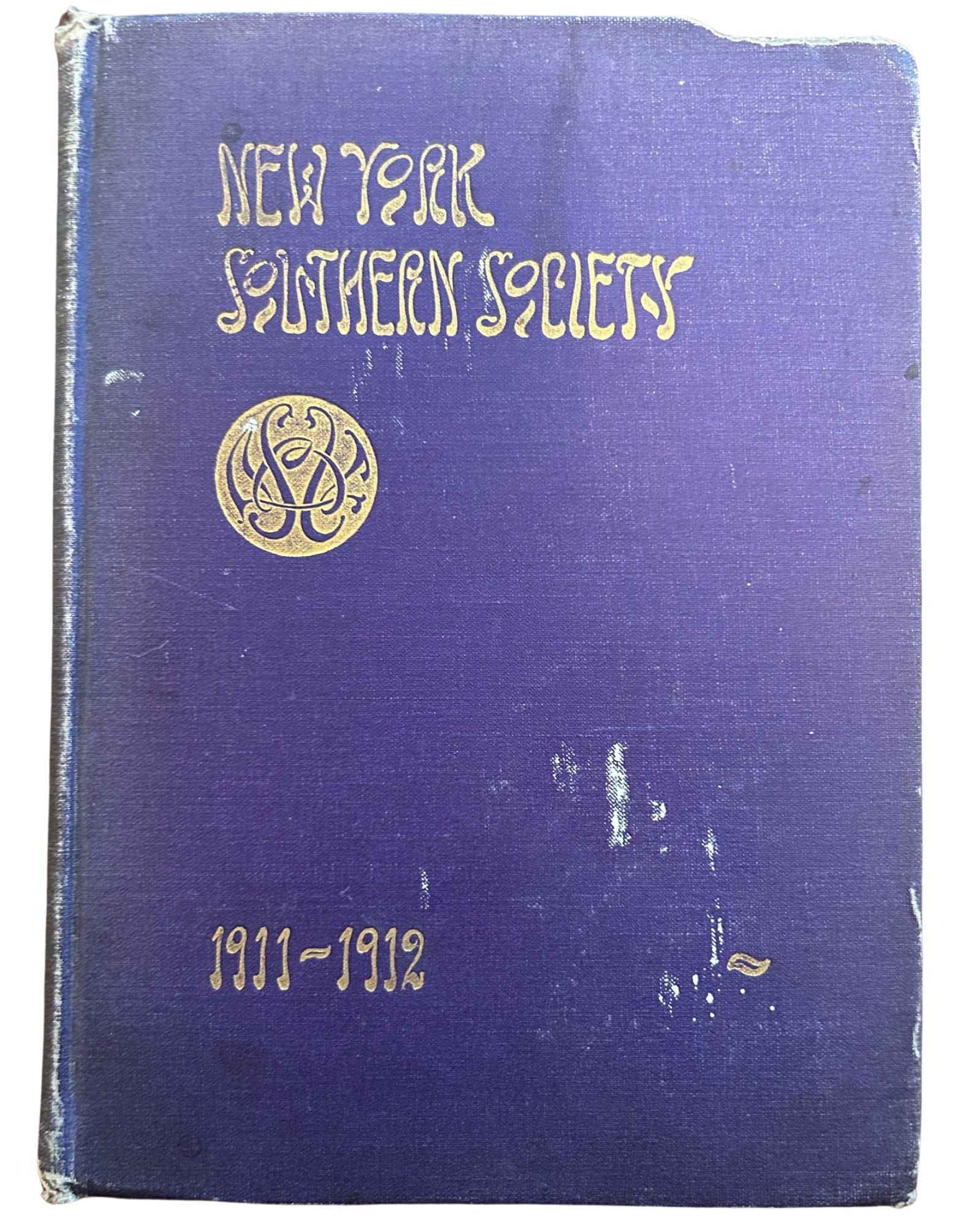New York City’s Transformation into a Global Hub
In the late 19th century, New York City rapidly ascended to the forefront of global commerce and culture due to its booming industrialization, thriving financial sector, and strategic location as a major port. The city’s population swelled with a massive influx of immigrants, fueling both its workforce and its cultural diversity. Landmark infrastructure projects, such as the construction of bridges and the subway, alongside the establishment of major cultural institutions like the Metropolitan Museum of Art, solidified New York’s reputation as a cultural and economic powerhouse. This period of explosive growth and innovation laid the foundation for New York’s emergence as a global leader in business, arts, and international trade.
The New York Southern Society is Established
During this transformative period in the city’s history, a group of Southern expatriates sought to create a refuge where they could hold onto the traditions and values of their homeland. On November 9, 1886, the New York Southern Society was born—not merely as a social club, but as a vital cultural hub for Southerners adapting to life in the North. Among its founders were men like John C. Calhoun, James H. Parker, William P. St. John, and Algernon Sydney Sullivan, the organization’s first president. Each was committed to fostering a sense of community among those who had journeyed north in search of new opportunities after the Civil War.
Incorporated under New York law in May 1889, the society’s mission was clear: “to cherish and perpetuate the memories and traditions of the Southern people and to cultivate friendly relations between Southern men resident or temporarily sojourning in New York City.” Membership was intentionally exclusive, reserved primarily for men who were natives or descendants of the South. Algernon Sydney Sullivan, for example, was born in Indiana, however, his father was a native Virginian. Thus, this exclusivity wasn’t necessarily about elitism—it was about creating a safe haven where the traditions of the rural South could be preserved amidst the whirlwind of New York’s rapid urbanization and accelerating growth.
Algernon Sydney Sullivan: A Leader and Advocate for Justice
At the heart of the society was Algernon Sydney Sullivan, a distinguished lawyer who had moved to New York in the mid-19th century and by 1879 organized the firm, Sullivan & Cromwell, which is now one of the country’s most prestigious law firms. Sullivan’s life was defined by a deep commitment to public service, justice, and compassion—values that were as much a part of his upbringing as they were of his legal career in New York.
An example of Sullivan’s unwavering commitment to justice and fairness is reflected in his defense of Confederate sailors during the Civil War, as well as his groundbreaking sponsorship of John H. Quarles, a former slave, as the first Black member of the New York Bar Association in 1880. Despite the potential for public backlash, Sullivan stood firm in his principles, advocating for the humane treatment of Confederate prisoners, a stance that led to his temporary imprisonment. His commitment to fairness was further demonstrated in his support of Quarles, challenging the racial barriers of the time and promoting racial equality in the legal profession. These actions, alongside his known opposition to slavery, illustrate Sullivan’s deep belief that justice transcends race, politics, and societal norms, and the importance of championing the rights and dignity for all individuals.
The Society Honors Sullivan’s Legacy
More than just a founding member of the society, Sullivan was an active leader, guiding the society’s direction early on so it might become a place where Southern culture could thrive in the North. His involvement was not passive; he participated fully in the society’s development, advocating for unity among Southerners and supporting their transition to life in New York. However, his involvement was short-lived. Sullivan passed away in December of 1887 from complications related to typhoid fever and bronchial congestion.
Soon after Sullivan’s death, the New York Southern Society sought a meaningful way to honor his legacy. In 1890, they established the Algernon Sydney Sullivan Award, an accolade that recognizes individuals who exemplify the character and service Sullivan embodied throughout his life. Initially awarded to Southern college students who had shown outstanding leadership and commitment to service, the award quickly became one of the society’s most significant contributions. It wasn’t just a tribute to Sullivan’s memory; it was a call to future generations to carry forward the legacy of integrity and public service.
The New York Southern Society Partners with the Sullivan Foundation
By 1925, the Sullivan Award had found its place in some of the South’s most respected educational institutions, including George Peabody College for Teachers in Nashville, William & Mary in Williamsburg, and Antioch College in Ohio. The following year, the society expanded the award’s reach to eleven more schools, including Davidson College, Hampden-Sydney College, and the University of Virginia, ensuring that Sullivan’s values continued to resonate throughout the South.
The establishment of the Algernon Sydney Sullivan Foundation in 1930 further cemented this legacy. Created by Sullivan’s son, George Sullivan, who was also an executive committee member of the New York Southern Society, the Foundation sought to perpetuate the principles of service and leadership that defined Algernon’s life. In collaboration with the New York Southern Society, the Foundation expanded the scope of the Sullivan Award, extending it to even more colleges and universities across the South. This partnership ensured that the award became a vibrant part of Southern educational culture, recognizing individuals who made significant contributions to their communities.
The Society’s Legacy Continues
The New York Southern Society, through its banquets, lectures, and debates, played a crucial role in preserving Southern culture in New York. It was a place where Southern traditions were celebrated and where Southerners could find the support they needed to navigate life in the North. However, as the decades passed, societal changes and the evolving nature of regional identities led to a decline in the society’s need and prominence. By the mid-20th century, the New York Southern Society had largely faded from the social scene. Yet, its legacy lives on through the Sullivan Award and the ongoing work of the Algernon Sydney Sullivan Foundation.
Today, as we approach the centennial celebration of the Sullivan Award on September 20, 2024, in New York City, the story of the Sullivans and their impact on both Southern and New York culture is more relevant than ever. This event is not just a commemoration of 100 years of recognizing those who embody the spirit of service and integrity—it is a reminder of the enduring power of community and compassion. The legacy of Algernon Sydney Sullivan, the New York Southern Society, and the Sullivan Foundation continues to inspire, shaping the future through the values they cherished so deeply.
Back to all News items.


